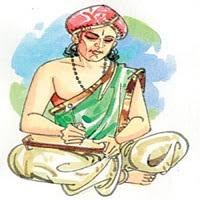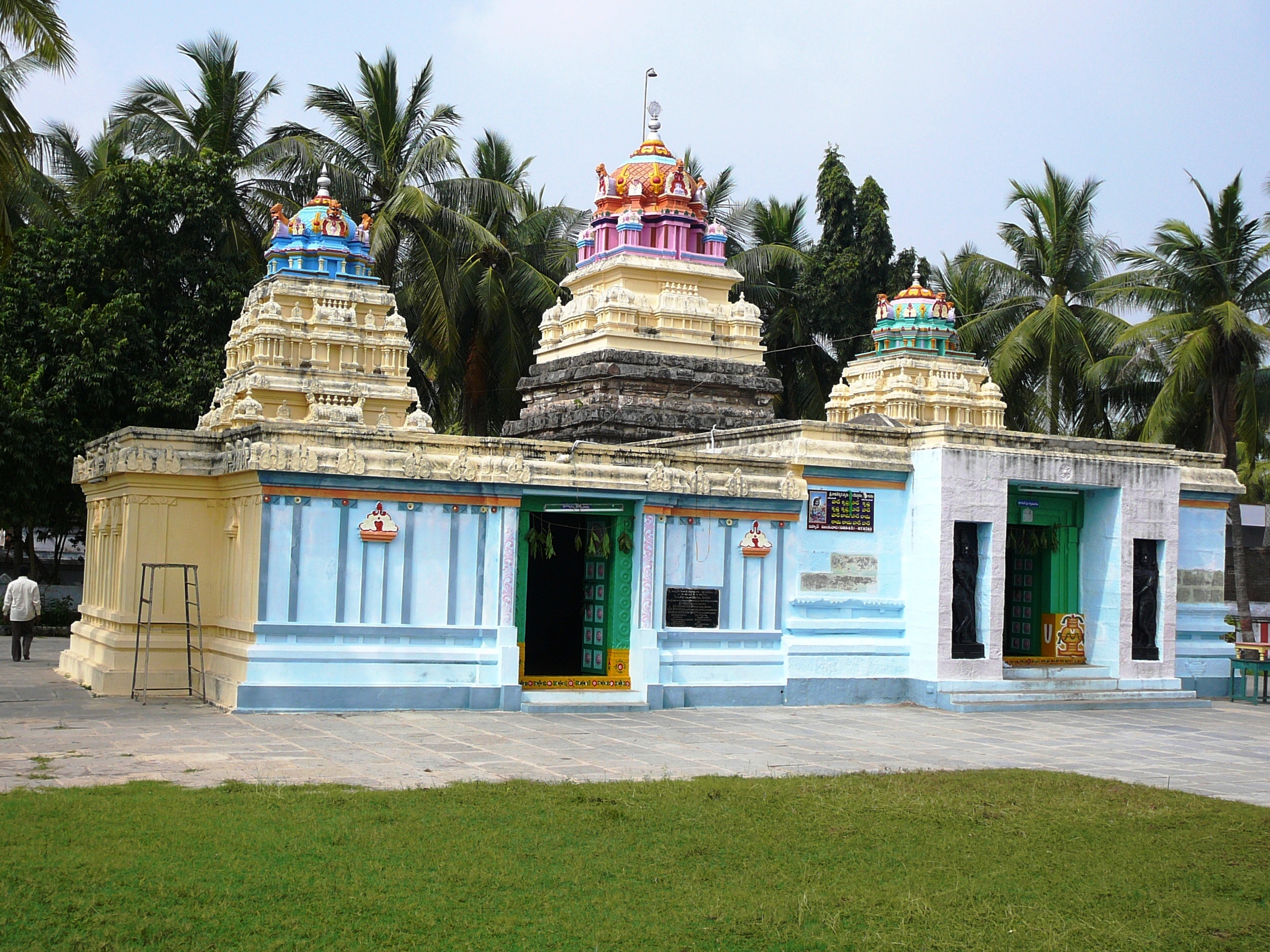|
Shataka
A shataka () is a genre of Sanskrit literature. It comprises works that contain one hundred verses. It is also a popular genre of Telugu literature. Etymology The Sanskrit word ''śatakam'' means one hundred. Literature * Dayashataka by Vedanta Desika * Andhra Nayaka Satakam by Kasula Purushottama Kavi *Dasarathi Satakam by Kancherla Gopanna (Ramadasu) *Subhashita Trisati (three sets of hundred) by Bhatruthahari * Vrushadhipa Satakam by Paalkuriki Somanna * Vyaja Ninda by Kasula Purushottama Kavi * Hamsaladeevi Gopala Satakam by Kasula Purushottama Kavi * Manasa bodha Satakam by Kasula Purushottama Kavi * Bhakta Kalpadruma Satakam by Kasula Purushottama Kavi * Sumathi Satakam Sumati Shatakam (Telugu: సుమతీ శతకము) is one of the most famous Telugu Shatakam. It is a neeti (moral) Shatakam. Sataka Karta (Sataka Creator) Sumati Satakam is composed of more than a 100 poems (padyalu). According to man ... by Baddena Bhupaludu References San ... [...More Info...] [...Related Items...] OR: [Wikipedia] [Google] [Baidu] |
Telugu Literature
Telugu literature is the body of works written in the Telugu language. It consists of poems, short stories, novels, plays, and song lyrics, among others. There is some indication that Telugu literature dates at least to the middle of the first millennium, the first extant works are from the 11th century when the Mahabharata was first translated to Telugu from Sanskrit by Nannaya. The language experienced a golden age under the patronage of the Vijayanagara king-poet Krishnadevaraya. Historiography There are various sources available for information on early Telugu writers. Among these are the prologues to their poems, which followed the Sanskrit model by customarily giving a brief description of the writer, a history of the king to whom the book is dedicated, and a chronological list of the books he published. In addition, historical information is available from inscriptions that can be correlated with the poems; there are several grammars, treatises, and anthologies that pro ... [...More Info...] [...Related Items...] OR: [Wikipedia] [Google] [Baidu] |
Sumathi Satakam
Sumati Shatakam (Telugu: సుమతీ శతకము) is one of the most famous Telugu Shatakam. It is a neeti (moral) Shatakam. Sataka Karta (Sataka Creator) Sumati Satakam is composed of more than a 100 poems (padyalu). According to many literary critics Sumati Satakam was reputedly composed by Baddena Bhupaludu (AD 1220-1280). He was also known as Bhadra Bhupala. He was a Chola prince and was a Vassal under the Kakatiya empress Rani Rudrama Devi during the thirteenth century. He was a pupil of Tikkana, a Telugu writer. If we assume that the Sumatee Satakam was indeed written by Baddena, it would rank as one of the earliest Satakams in Telugu along with ''Vrushadhipa Satakam'' of Palkuriki Somanatha Palkuriki Somanatha was one of the most noted Telugu language writers of the 12th or 13th century. He was also an accomplished writer in the Kannada and Sanskrit languages and penned several classics in those languages. He was a Lingayat a follo ... and ''Sarveswara Satak ... [...More Info...] [...Related Items...] OR: [Wikipedia] [Google] [Baidu] |
Sanskrit Literature
Sanskrit literature broadly comprises all literature in the Sanskrit language. This includes texts composed in the earliest attested descendant of the Proto-Indo-Aryan language known as Vedic Sanskrit, texts in Classical Sanskrit as well as some mixed and non-standard forms of Sanskrit. Literature in the older language begins with the composition of the Ṛg·veda between about 1500 and 1000 BCE, followed by other Vedic works right up to the time of the grammarian Pāṇini around 6th or 4th century BCE (after which Classical Sanskrit texts gradually became the norm). Vedic Sanskrit is the language of the extensive liturgical works of the Vedic religion, while Classical Sanskrit is the language of many of the prominent texts associated with the major Indian religions, especially Hinduism, but also Buddhism, and Jainism. Some Sanskrit Buddhist texts are also composed in a version of Sanskrit often called Buddhist Hybrid Sanskrit or Buddhistic Sanskrit, which contains many ... [...More Info...] [...Related Items...] OR: [Wikipedia] [Google] [Baidu] |
Sanskrit Poetry
Sanskrit literature broadly comprises all literature in the Sanskrit language. This includes texts composed in the earliest attested descendant of the Proto-Indo-Aryan language known as Vedic Sanskrit, texts in Classical Sanskrit as well as some mixed and non-standard forms of Sanskrit. Literature in the older language begins with the composition of the Ṛg·veda between about 1500 and 1000 BCE, followed by other Vedic works right up to the time of the grammarian Pāṇini around 6th or 4th century BCE (after which Classical Sanskrit texts gradually became the norm). Vedic Sanskrit is the language of the extensive liturgical works of the Vedic religion, while Classical Sanskrit is the language of many of the prominent texts associated with the major Indian religions, especially Hinduism, but also Buddhism, and Jainism. Some Sanskrit Buddhist texts are also composed in a version of Sanskrit often called Buddhist Hybrid Sanskrit or Buddhistic Sanskrit, which contains many ... [...More Info...] [...Related Items...] OR: [Wikipedia] [Google] [Baidu] |
Sanskrit
Sanskrit (; attributively , ; nominally , , ) is a classical language belonging to the Indo-Aryan branch of the Indo-European languages. It arose in South Asia after its predecessor languages had diffused there from the northwest in the late Bronze Age. Sanskrit is the sacred language of Hinduism, the language of classical Hindu philosophy, and of historical texts of Buddhism and Jainism. It was a link language in ancient and medieval South Asia, and upon transmission of Hindu and Buddhist culture to Southeast Asia, East Asia and Central Asia in the early medieval era, it became a language of religion and high culture, and of the political elites in some of these regions. As a result, Sanskrit had a lasting impact on the languages of South Asia, Southeast Asia and East Asia, especially in their formal and learned vocabularies. Sanskrit generally connotes several Old Indo-Aryan language varieties. The most archaic of these is the Vedic Sanskrit found in the Rig Veda, a colle ... [...More Info...] [...Related Items...] OR: [Wikipedia] [Google] [Baidu] |
Dayashataka
The ''Dayashataka'' () is a Sanskrit hymn composed by the Hindu philosopher Vedanta Desika. Comprising one hundred verses in ten decads, the hymn was written in praise of Venkateshvara, a form of Vishnu who is the principal deity of the Venkateshvara Temple, Tirupati. Etymology ''Dayshataka'' is Sanskrit for "centum on mercy". Content The first decad of this work is composed in the ''anustubh'' metre of Sanskrit poetry. The poet offers his obeisance to the Venkata hill, upon which the Venkateshvara Temple stands, as well as his preceptors and the major deities of the Sri Vaishnava tradition. The second decad is composed in the ''giti'' metre and describes the ''ati-bhogya-tva'', the enjoyable qualities of God. The third decad is composed in the ''upachandasika'' metre, centred around the ''śubhā-śubhaga-tanuḥ'', the auspicious and attractive body of the deity. The fourth decad is composed in the ''malini'' metre, addressing the ''atiśaya'', the excellence o ... [...More Info...] [...Related Items...] OR: [Wikipedia] [Google] [Baidu] |
Vedanta Desika
Vedanta Desikan (1268–1369), also rendered Vedanta Desikar, Swami Vedanta Desikan, and Thoopul Nigamaantha Desikan, was an Indian polymath who wrote philosophical as well as religious and poetical works in several languages, including Sanskrit, Manipravaḷam (a Sanskritised form of literary Tamil), Tamil and Prakrit. He was an Indian philosopher, Sri Vaishnava guru, and one of the most brilliant stalwarts of Sri Vaishnavism in the post-Ramanuja period. He was a Hindu devotee, poet, Master of Acharyas (''desikan'') and a logician and mathematician. He was the disciple of Kidambi Appullar, also known as Athreya Ramanujachariar, who himself was of a master-disciple lineage that began with Ramanuja. Vedanta Desikan is considered to be avatar (incarnation) of the divine bell of Venkateshvara of Tirumala by the Vadakalai sect of Sri Vaishnavism. Vedanta Desikan belongs to Vishwamitra/Kaushika gotra. On the occasion of 750th anniversary of the life of Vedanta Desikan, the I ... [...More Info...] [...Related Items...] OR: [Wikipedia] [Google] [Baidu] |
Andhra Nayaka Satakam
Andhra Vishnu, better known as Srikakula Mahavishnu statue, was set up in Andhra in a pre-existing older temple. The previous deistic form worshiped in the temple is unknown. Āndhra Vishnu temple The deity of the temple is known as ''Andhra Maha Vishnu ''or ''Srikakulandhra Maha Vishnu''. The main sanctum of the temple survived at least since the time of the Satavahana emperors. The deity for whom the Satavahanas built the temple is unknown. The temple was also repaired and worshipped restored by the Rajas of Challapalli after a period of decline due to Muslim raids. This temple has many attractions and historical links. As many as 32 inscriptions, including those issued by Krishnadevaraya, appear on the walls of the temple. The presiding deity has some striking peculiarities. The deity holds a sankha in right hand and a chakra in left hand as against usual practice of vice versa.The inscriptions on Avatars were added after 1010 reconstruction. The oldest version had no re ... [...More Info...] [...Related Items...] OR: [Wikipedia] [Google] [Baidu] |
Kasula Purushottama Kavi
Kasula Purushottama Kavi was a Telugu language, Telugu poet who lived during the late 18th century (). His parents were Kasula Appalaraju and Ramanamma. He hailed from the Diviseema area of Krishna District, Andhra Pradesh. He was a court poet of the then-Yarlagadda Sivarama Prasad, Raja of Challapalli, Yarlagadda Ankineedu Prasad I (r. 1792–1819) of the Challapalli, Challapalli ''Samasthanam'' and possibly of his father as well. Purushottama Kavi is recognized for composing literary works in Telugu consisting of one hundred poetic stanzas, known as Satakam, satakams. Works Kasula Purushottama Kavi is known for composing the ''Andhra Nayaka Satakam'' on Srikakula Andhra Mahavishnu, apparently when the temple was occupied by raiding Muslim soldiers. The prominent Andhra Maha Vishnu Temple, to whose presiding deity Purushottama Kavi dedicated his ''satakam'' to, is where Vijayanagara Emperor Krishnadevaraya had a dream compelling him to write the Telugu text ''Amuktamalyada''. ... [...More Info...] [...Related Items...] OR: [Wikipedia] [Google] [Baidu] |
Bhadrachala Ramadasu
Kancharla Gopanna ( te, కంచర్ల గోపన్న) ( – 1688), popularly known as Bhakta Ramadasu or Bhadrachala Ramadasu ( te, భద్రాచల రామదాసు), was a 17th-century devotee of the Hindu god Rama, a saint-poet and a composer of Carnatic music. He is a famous ''Vaggeyakara'' (classical composer) from the Telugu classical era. He was born in the village of Nelakondapalli in Khammam district, and orphaned as a teenager. He spent his later years in Bhadrachalam and 12 years in solitary confinement at the Golconda prison during the Qutb Shahi-rule. Different mythical stories about his life circulate in the Telugu tradition. He is renowned for constructing the famous Sita Ramachandraswamy Temple and pilgrimage center on the banks of river Godavari at Bhadrachalam. His devotional ''kirtana'' lyrics to Rama illustrate the classical Pallavi, Anupallavi and Caranam genre composed mostly in Telugu, some in Sanskrit and with occasional use of Tamil l ... [...More Info...] [...Related Items...] OR: [Wikipedia] [Google] [Baidu] |
Sanskrit Words And Phrases
Sanskrit (; attributively , ; nominally , , ) is a classical language belonging to the Indo-Aryan branch of the Indo-European languages. It arose in South Asia after its predecessor languages had diffused there from the northwest in the late Bronze Age. Sanskrit is the sacred language of Hinduism, the language of classical Hindu philosophy, and of historical texts of Buddhism and Jainism. It was a link language in ancient and medieval South Asia, and upon transmission of Hindu and Buddhist culture to Southeast Asia, East Asia and Central Asia in the early medieval era, it became a language of religion and high culture, and of the political elites in some of these regions. As a result, Sanskrit had a lasting impact on the languages of South Asia, Southeast Asia and East Asia, especially in their formal and learned vocabularies. Sanskrit generally connotes several Old Indo-Aryan language varieties. The most archaic of these is the Vedic Sanskrit found in the Rig Veda, a collec ... [...More Info...] [...Related Items...] OR: [Wikipedia] [Google] [Baidu] |








